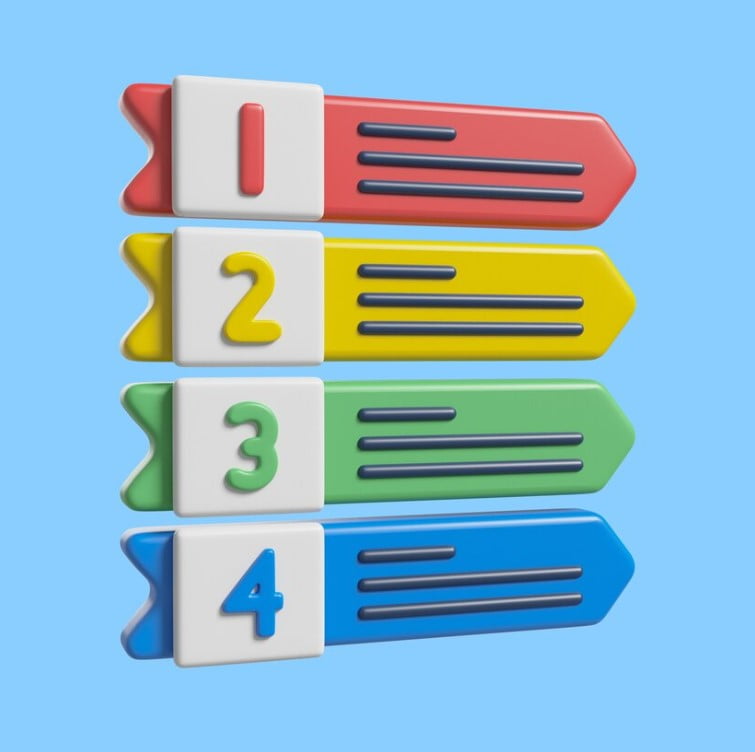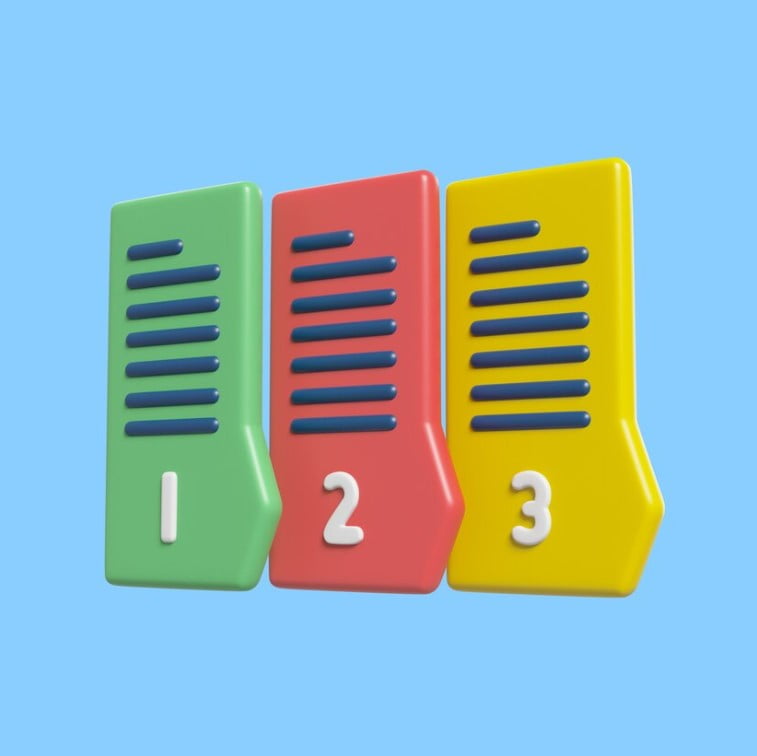When it comes to academic writing, adhering to strict guidelines is essential. One important aspect of academic writing is creating a well-organized table of contents that follows APA formatting guidelines. A clear and concise APA table of contents allows for easy navigation, improves organization, and adds credibility to your work. In this article, you will learn the ins and outs of creating an APA table of contents, including formatting guidelines, templates, and examples. By the end of this article, you’ll have the tools to craft a professional and structured document that meets academic standards.
Whether you’re a student or a professional, creating an APA format table of contents can be a daunting task. However, following the guidelines outlined in this article will make the process much easier. Keep reading to learn more about crafting a well-structured APA style table of contents.
Table of Contents
Understanding the Importance of an APA Table of Contents

Are you struggling to understand the significance of an APA table of contents? Before diving into creating one, it’s important to know why it’s a crucial element in academic writing.
A well-structured APA table of contents adheres to academic standards and improves the organization, reader accessibility, and credibility of your document. It provides a clear and concise overview of your content, allowing readers to quickly locate specific sections and subsections. A high-quality table of contents showcases the professionalism and attention to detail of the author, increasing the perceived value of the document.
By taking the time to craft a structured APA table of contents, you demonstrate a commitment to excellence, ensuring your document meets the expectations of academic institutions and readers alike.
Formatting Your APA Table of Contents

To ensure your APA table of contents adheres to academic standards, it’s crucial to master formatting guidelines. By following the proper APA style table of contents format, you will create a well-structured document that is easy to navigate. Start by using a clear font, such as Times New Roman, in size 12, and align your text to the left margin. Double-space all text, including headings, and capitalize main words in section titles.
When formatting your APA table of contents, it’s essential to use proper indentation to convey the hierarchical structure of your content. Level 1 headings should be centered and bolded, while Level 2 headings should be flush left and bolded. Level 3 headings should be indented and bolded, and Level 4 headings should be indented further and bolded in parentheses.
Example:
Level 1 Heading
- Level 2 Heading
- Level 3 Heading
- (Level 4 Heading)
- Level 3 Heading
By following these simple guidelines, you can ensure your APA format table of contents is visually appealing and easy to read, allowing readers to quickly find the relevant information they need.
Using an APA Table of Contents Template

Stop struggling with formatting your APA table of contents from scratch! Choosing an APA table of contents template can save you significant time and ensure you meet APA’s strict formatting standards.
By using a pre-designed template, you can easily customize the table of contents to your specific document while ensuring consistency throughout. Plus, it guarantees you don’t miss any essential components such as the required headings and subheadings.
You can find APA table of contents templates online or directly through Microsoft Word. Remember to select a reputable source and always double-check that the template aligns with your version of APA formatting guidelines.
Examples of APA Table of Contents
Are you struggling with organizing your APA table of contents? Take a look at these examples and samples for inspiration! By analyzing these examples, you will gain a better understanding of how to label your sections, subsections, and page numbers with accuracy and precision. Remember, a well-structured table of contents not only improves organization but also enhances reader accessibility and credibility.
| Section | Page Number |
|---|---|
| Abstract | 3 |
| Introduction | 4 |
| Literature Review | 6 |
| Methodology | 10 |
| Results | 14 |
| Discussion | 18 |
| Conclusion | 20 |
As seen in this sample, it is important to prioritize the sections that are vital to your document’s content, providing a clear hierarchical structure for readers to follow. Proper labeling in a table of contents helps maintain the structural integrity of your document.
Creating an APA Table of Contents in Microsoft Word
Microsoft Word offers a simple and efficient way to generate an APA table of contents automatically. Instead of creating it manually, you can take advantage of the useful tools available in the software to create a professional and error-free table of contents. Here is how to get started:
1. Use Heading Styles
The first step is to format the headings in your document using the built-in Heading Styles in Microsoft Word. By default, the styles come in six different levels, indicating the level of importance of each heading. Make sure that the headings are consistent throughout so that Word can recognize them and generate a table of contents based on their hierarchy.
2. Place the Cursor Where You Want the Table of Contents to Appear
Once you have your headings properly formatted, place your cursor where you want the table of contents to appear. This could be at the beginning of your document or on a separate page.
3. Click on “References” and then “Table of Contents”
On the Ribbon at the top of your Word document, click on the “References” tab. Then, locate the “Table of Contents” button and click on it to reveal a drop-down menu with several pre-designed table of contents options.
4. Choose a Table of Contents Design
Choose the design that best fits your document’s needs. If you prefer to create a custom design, select the “Custom Table of Contents” option, and then click on the “Modify” button. From there, you can make changes to the font, color, and other design elements of your table of contents.
5. Update the Table of Contents
Finally, after choosing your desired design, click on the “Update Table” button to generate the table of contents. If your headings or page numbers change, just click “Update Table” again, and the new information will be reflected in the table of contents.
That’s it! By following these steps, you can create an APA table of contents in Microsoft Word with ease.
Formatting the Pages of Your APA Table of Contents
When creating an APA table of contents, it’s important that your design is consistent throughout your document and that it includes page numbers and alignment. A visually appealing and standardized appearance will guide readers with ease and showcase your attention to detail.
Start by deciding on the typeface and font size for your headings and subheadings, using the same formatting consistently throughout your document. Resize the text that you use for your headings so that they stand out from the rest of the text.
Next, format your page numbers to fit the guidelines provided by your university or publisher. Typically, the page number should be top-right aligned and should appear at the top of each page on which your sections appear.
Finally, ensure that all chapter titles and subtitles are written with aligning capitalization, indentation, and font weight. Bold and italicize the headings and adjust the spacing and margins to improve the overall appearance of your table of contents.
Example Table:
| Section Title | Page Number |
|---|---|
| Introduction | 1 |
| Literature Review | 2 |
| Methodology | 5 |
| Results | 7 |
| Conclusion | 9 |
By following the above tips, you’ll have an aesthetically pleasing and smoothly navigable table of contents in accordance with academic standards
Mastering the Structure of an APA Table of Contents
Creating an APA table of contents with a clear hierarchical structure is key to organizing the content of your document in a logical and reader-friendly way. To achieve this, it is essential to understand the nuances of the APA formatting guidelines for section headings and subsections.
The hierarchical structure of an APA table of contents should be consistent, with higher-order headings indicated with larger font sizes and bolded text. Subsections should be indented and presented with smaller font sizes. This visual hierarchy ensures that readers can easily follow the flow of your document and locate specific sections with ease.
One effective strategy for organizing your APA table of contents is to use parallel construction, which means that headers at the same level should be grammatically parallel in structure. This consistency reinforces the overall structure of your document and facilitates comprehension.
By mastering the nuanced structure of an APA table of contents, you can ensure that your document is easy to navigate and adheres to academic standards for structured documents.
Crafting Effective Section Headings in APA
As you learned in previous sections, the hierarchical structure of your APA table of contents is essential for maintaining a well-organized and reader-friendly document. In addition to the structure, crafting effective section headings is crucial for guiding readers through each section and accurately reflecting the content within.
When creating section headings, keep in mind the hierarchical structure and ensure each heading accurately corresponds to the appropriate level. Utilize clear and concise language, avoiding ambiguity and jargon. Use active voice and focus on the main idea of the section.
It’s also vital to maintain consistency in terminology and formatting throughout your headings. Avoid using abbreviations or acronyms that may be unclear to the reader.
Lastly, don’t forget to carefully proofread your headings, ensuring they accurately reflect the content of each section and adhere to APA formatting standards.
Conclusion
Congratulations! You now have the knowledge and tools to craft an impressive APA table of contents that meets academic standards. Remember to proofread your work and ensure that your table of contents aligns with the APA formatting guidelines. By following the outlined steps and utilizing pre-designed templates, you can save time and effort while creating a structured document that is easy to navigate.
The importance of an APA table of contents cannot be overstated. It not only improves the organization and accessibility of your document but also enhances its overall credibility. When creating your table of contents, be sure to consider the hierarchical structure of your document and craft informative section headings that accurately reflect the content of each section.
With this guide, you can confidently create an APA table of contents that conveys a logical flow and supports your research or academic writing. Good luck!




